Red Hydrogen One Hands-On: Gimmicky Holograms, But Mods Have Promise
Red's hyped-up holographic Hydrogen One is not the futuristic phone of your dream. But it just might be the best phone yet for aspiring filmmakers.
BURBANK, California — The Hydrogen One isthe first smartphone from high-end digital camera maker Red, and for a phone that's supposed to hit shelves this August, it's still pretty mysterious.
All you have to do is drop $1,295 on this Android-based smartphone ($1,595 for the titanium version), and the company promises an awe-inspiring holographic display, a modular system you'll actually want to use, and dual rear and front cameras for capturing 4-View stills and video.
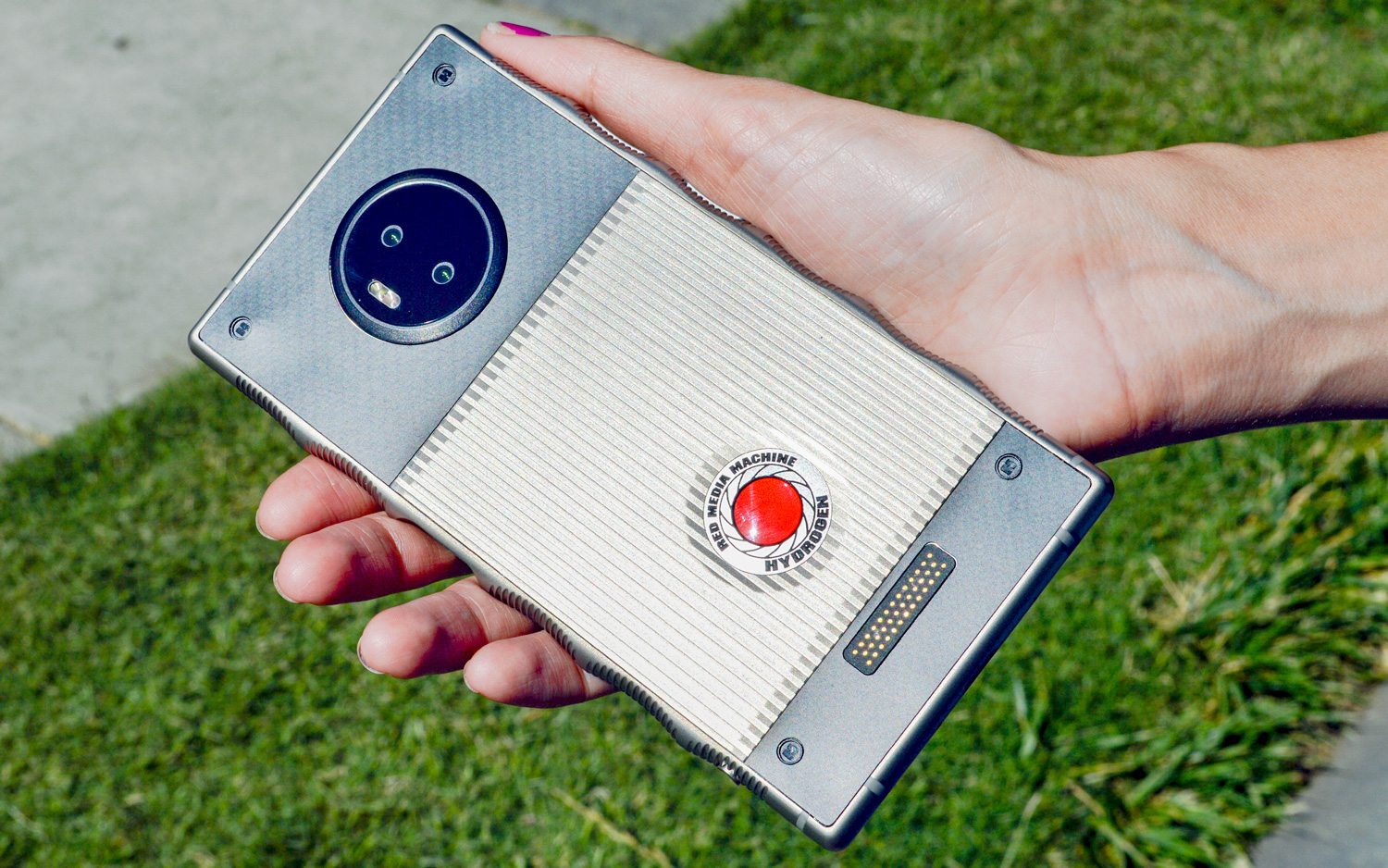
For sound, the phone will have bigger-than-average stereo speakers, a headphone jack and an onboard audio encoder that can turn regular files into A3D (a replication of surround sound).
I know what you're thinking: These are some pretty big claims, considering Red won't even let anyone take a picture of the screen (because the holographic 4-View can't be adequately replicated in 2D photos).
Luckily, Red has nothing against people seeing the screen in person, so we had a chance to check out the Hydrogen One at AT&T's recent Shape event in Burbank, California. (Both AT&T and Verizon will carry the phone when it launches later this year.) Here's what we think so far.
One big phone
Built like a tank, the Hydrogen One is a beast, and unabashedly so. You won't find any of the curves, swoops or edge-to-edge designs that other phone makers use to disguise bulky frames and giant screens — just sharp, squared-off corners and lightly scalloped metal edges for added grip.
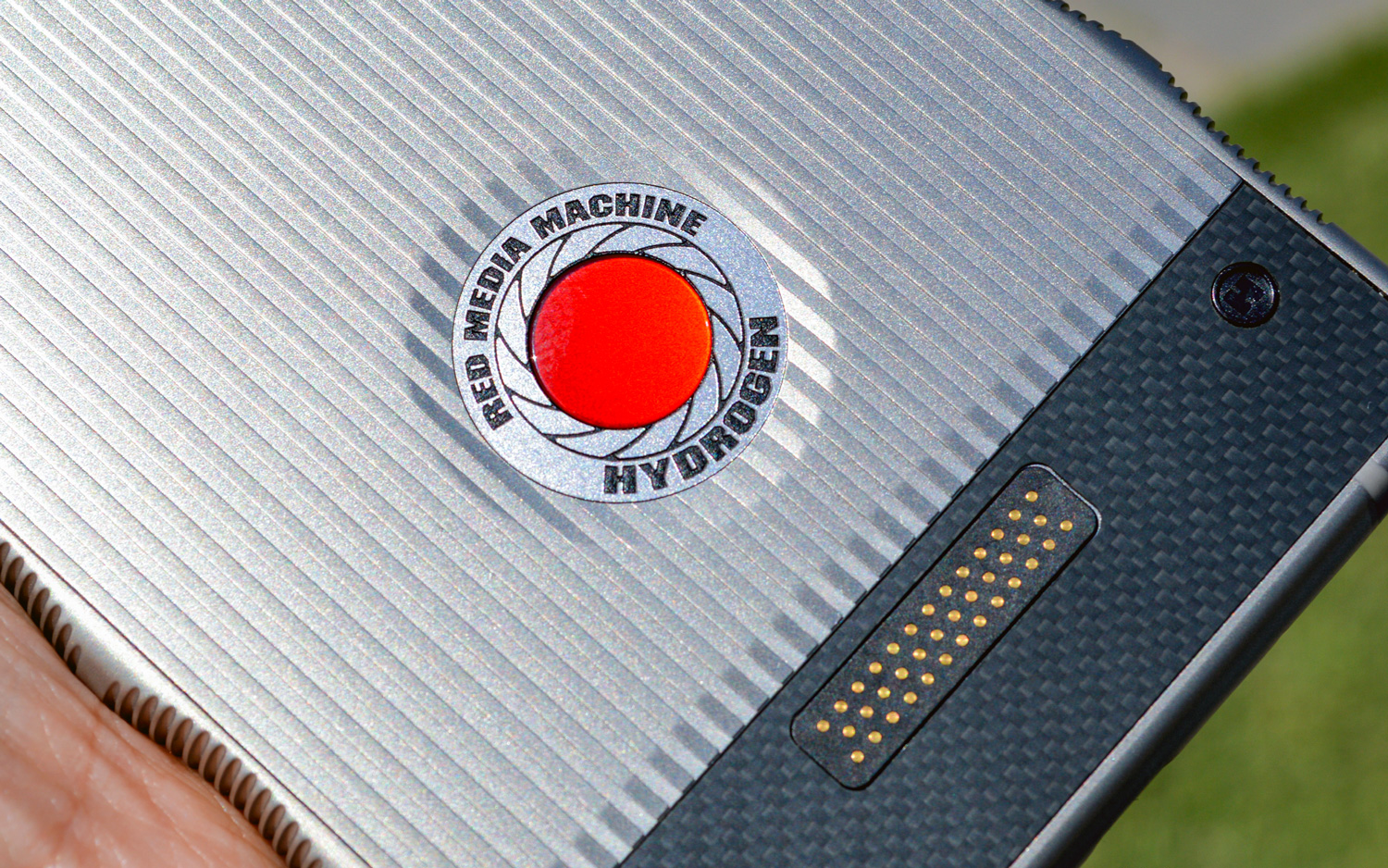
The phone is housed in a black aluminum or titanium body, with a grooved backplate sporting Red's logo, Kevlar accents and exposed pogo pins for modularity (similar to the Moto Z). It's not particularly pretty or sleek, but the Hydrogen One does look like something that fits into a bigger (modular) ecosystem.
Next to my iPhone X — which is slimmer but has a 5.8-inch screen — the Hydrogen One feels like a tank.
The Hydrogen One's buttons and ports are pretty straightforward; the right side houses a recessed power button and a dedicated shutter button for camera mode, and the left side features volume buttons. On the bottom of the phone, you'll find a USB-C charging port, and on the top, there's a 3.5mm headphone jack and an easy-to-open microSD/SIM card slot where you'll be able to add up to 400GB of extra storage.
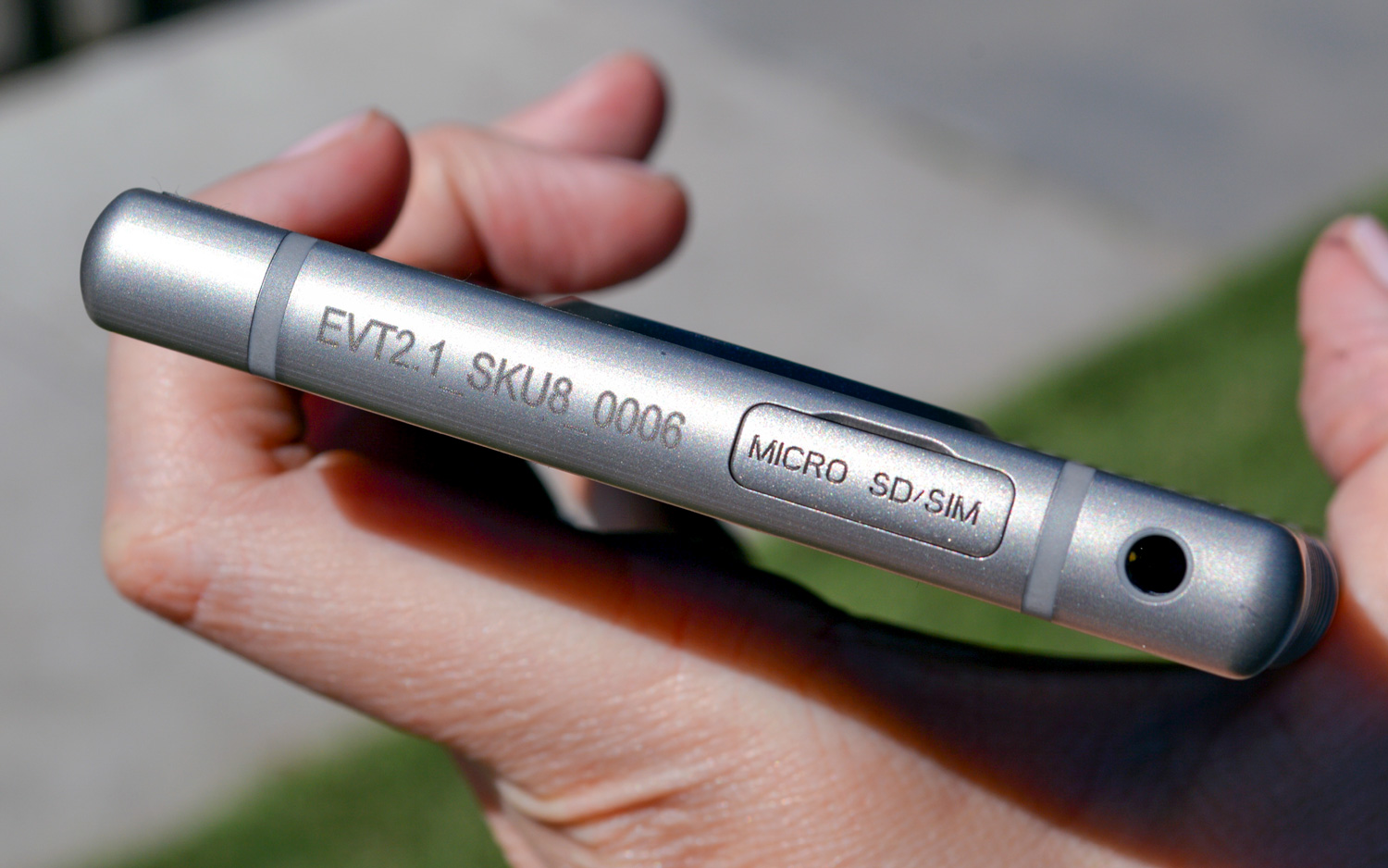
Next to my iPhone X — which is slimmer but has a 5.8-inch screen — the Hydrogen One feels like a tank. It's sturdy, solidly built, surprisingly heavy (about 2 ounces heavier than other 5.7-inch phones) and a little too big for the average user. I don't have particularly small hands (my hand span measures 8.5 inches, which is big enough to palm a men's basketball), and this phone is too big to be comfortable. The scalloped edges help a little with grippiness, but they're still made of metal (and thus are slippery).
MORE: Best Smartphone Cameras
The good news is that I'm not lying when I say this device is built like a tank; you could probably drop the Hydrogen One several times without leaving a dent. The bad news is that, if you were to drop this phone on your face, it would probably knock a tooth out.
The bottom line: The Hydrogen One is big, heavy and not particularly easy to hold. And you can't easily fix this with an accessory such as a PopSocket expandable grip or a grippy case if you want to use the phone's modular features.
Holographic screen is more like hologram-adjacent
The Hydrogen One's 5.7-inch "holographic" display, which uses screen technology from a company called Leia, is probably the phone's most hyped-up features. And, like most hyped-up features, it may be a little … overhyped.
If you're imagining Star Wars, or Star Trek, or even Tupac at Coachella from the Hydrogen One's holographic display, you're going to have to dial down those expectations.
Don't get me wrong — as far as glasses-free 3D goes, the Hydrogen One's screen looks pretty good. Surprisingly good, even. But if you're imagining Star Wars, or Star Trek, or even Tupac at Coachella, you're going to have to dial down those expectations. A lot.
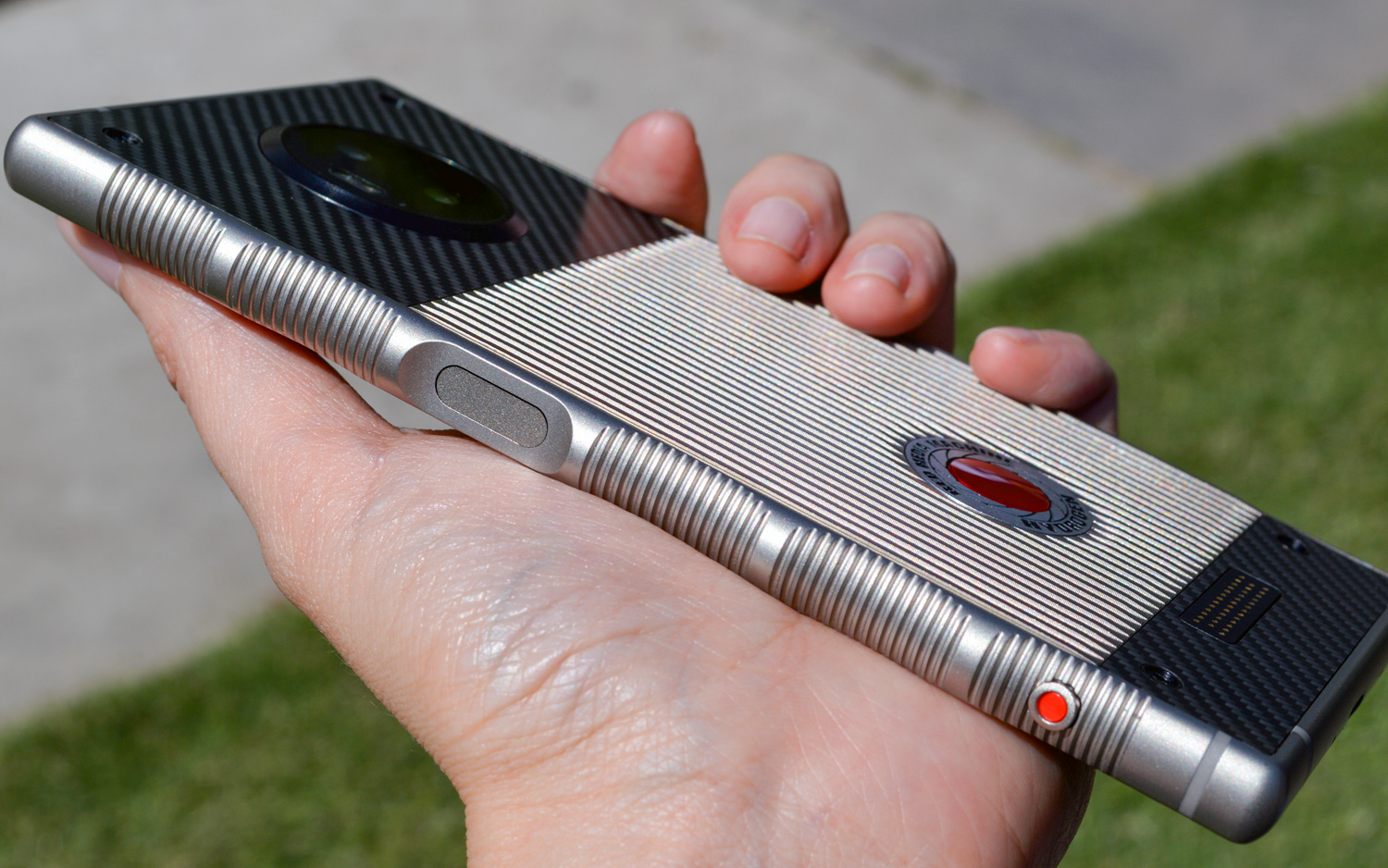
The Hydrogen One's display is much closer to what you see in a 3D movie — but without the glasses — than it is to a Princess Leia distress call.
If you keep your expectations in check, you'll find that the Hydrogen One's display is actually pretty neat. Instead of unrealistic sci-fi holograms, the screen displays "holographic 4-View," also sometimes called "multiview," which is basically just 3D with a few more angles. This means you'll see the type of 3D you're used to seeing, in which the picture looks like it has depth, but nobody's jumping onto your lap. And the illusion will still work, mostly, if you move the screen around a bit.
I watched a demo reel of clips from various films, including Brave and Monsters Inc., and the experience was neat, but not life-changing. The 3D effect can be viewed from more than one angle, but it isn't the seamless experience Red is trying to convince me it is. When I tilted the phone more than a couple of degrees, the images stuttered in and out of 3D. When I twisted the phone up and down, I saw some light bleed and jumpiness, and more stuttering. These things aren't a big deal when you're passively watching a movie, but they're definitely going to be an issue if and when games start popping up for the platform.
MORE: iPhone X Is King of OLED Screens: See for Yourself
The holographic display is neat, but there's a reason I'm using that word: It still feels more gimmicky than essential, even though it does look better than most glasses-free 3D and the amount of depth in each image is impressive. At least it sounds like the content will be there; Red is partnering with Lionsgate, and is working on deals with other studios, to convert 3D films into holographic 4-View. (Apparently the process is pretty easy.)
As for the other part of the immersive entertainment equation — audio — it was difficult to get a true hands-on look. The phone's stereo speakers sounded louder than average, but I was also inside a tent in the middle of a public-facing entertainment festival. I was able to check out a surround sound demo, which took place in the back of a van, and that was impressive enough. But I couldn't experience the phone's audio conversion capabilities firsthand. (The phone is supposedly capable of converting stereo sound into dimensional audio.)
Modules might be the game changer
Modular phones never really took off, but that doesn't mean Red is wasting its time pushing a modular ecosystem. In fact, Red has been using a module system with its cameras for years.
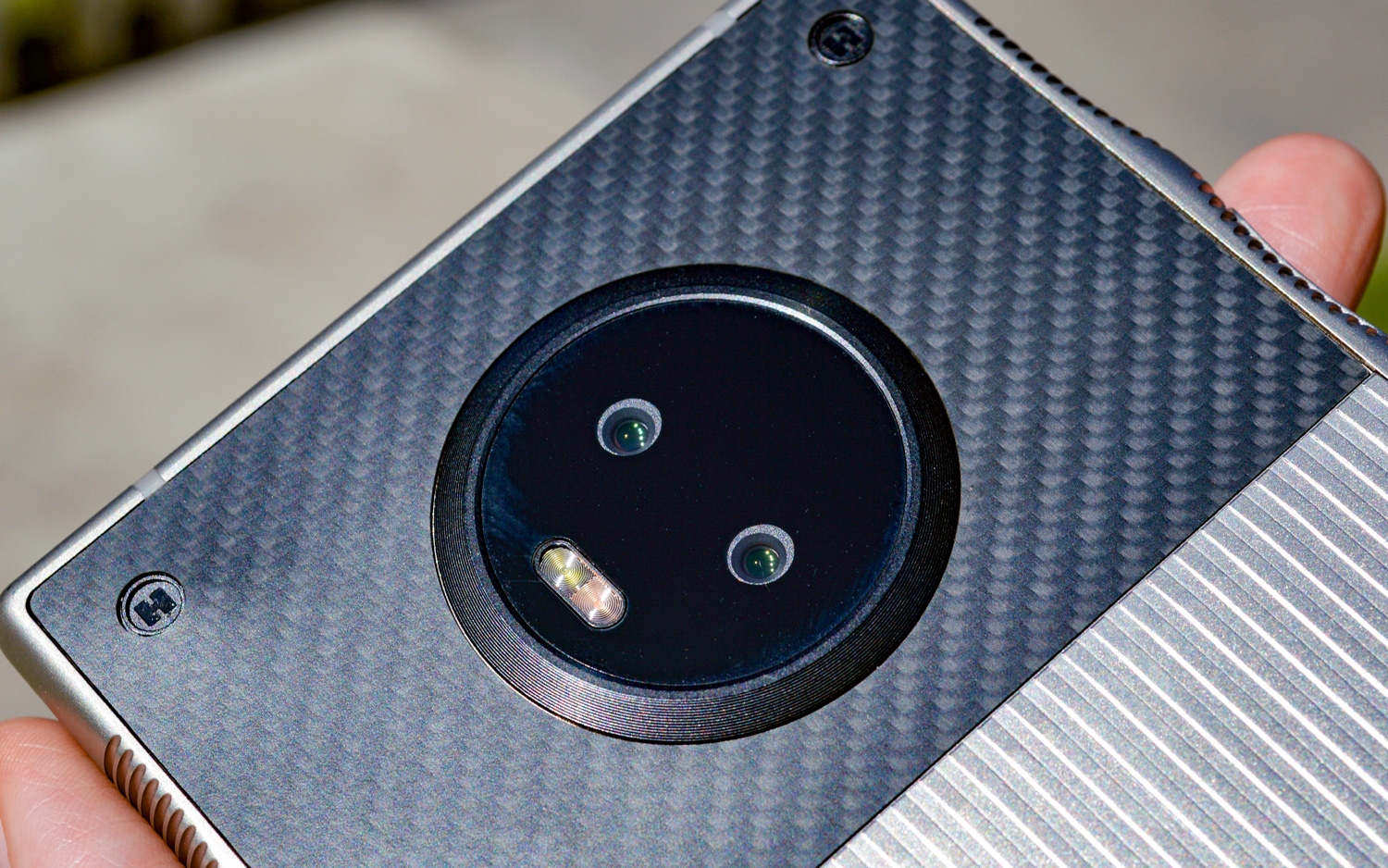
There were no modules at the demo, so I couldn't see exactly how they'll attach to the phone or how they will affect (or not affect) functionality. Red founder Jim Jannard said the first few modules we'll see will be basic — battery modules, lens attachment modules, etc. — and will probably drop shortly after the phone launches.
But the most anticipated module — a cinema module that will turn the Hydrogen One into a professional-grade camera similar to the ones Red offers to moviemakers — probably won't launch until at least a year from now. The modules won't be free, of course, but Jannard said he believes people will be "pleasantly surprised" by the price.
Outlook
At $1,295, Red will have a hard time convincing even discerning consumers that its Hydrogen One is worth the premium. The holographic display is mostly a gimmick at this stage. However, if Red manages to get some Red-quality camera modules out before the hype dies down around this phone, the Hydrogen One might just find a niche to thrive in among burgeoning filmmakers.
Image Credits: Sarah Jacobsson Purewal/Tom's Guide
Sign up to get the BEST of Tom's Guide direct to your inbox.
Get instant access to breaking news, the hottest reviews, great deals and helpful tips.
Sarah is a hardware enthusiast and geeky dilettante who has been building computers since she discovered it was easier to move them across the world — she grew up in Tokyo — if they were in pieces. She's currently senior editor at our sister site Tom's Hardware and is best-known for trying to justify ridiculous multi-monitor setups, dramatically lowering the temperature of her entire apartment to cool overheating components, typing just to hear the sound of her keyboard, and playing video games all day "for work." She's written about everything from tech to fitness to sex and relationships, and you can find more of her work in PCWorld, Macworld, TechHive, CNET, Gizmodo, PC Gamer, Men's Health, Men's Fitness, SHAPE, Cosmopolitan, and just about everywhere else. In addition to hardware, she also loves working out, public libraries, marine biology, word games, and salads. Her favorite Star Wars character is a toss-up between the Sarlacc and Jabba the Hutt.

